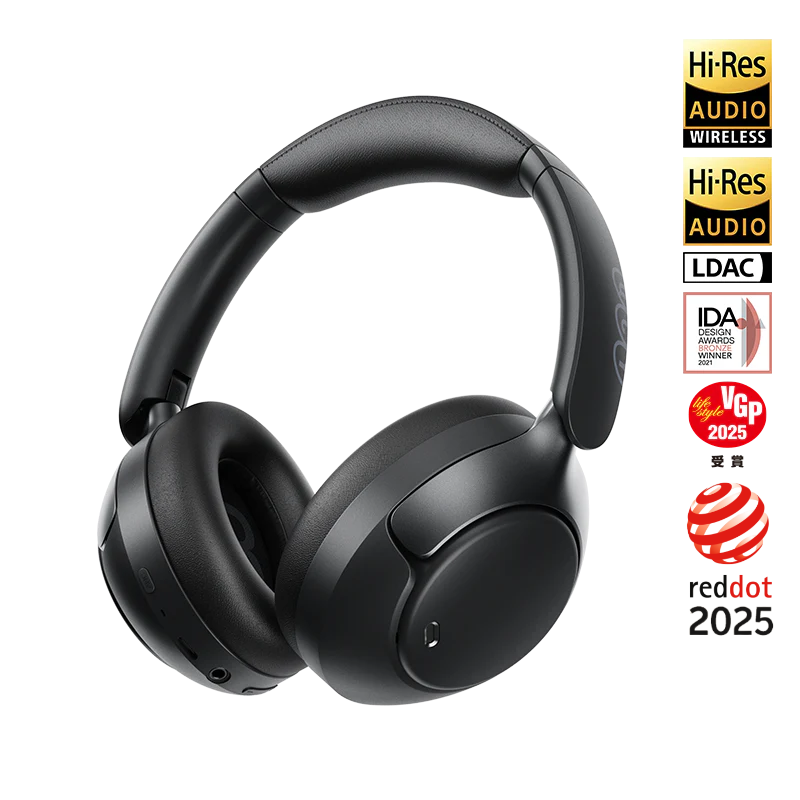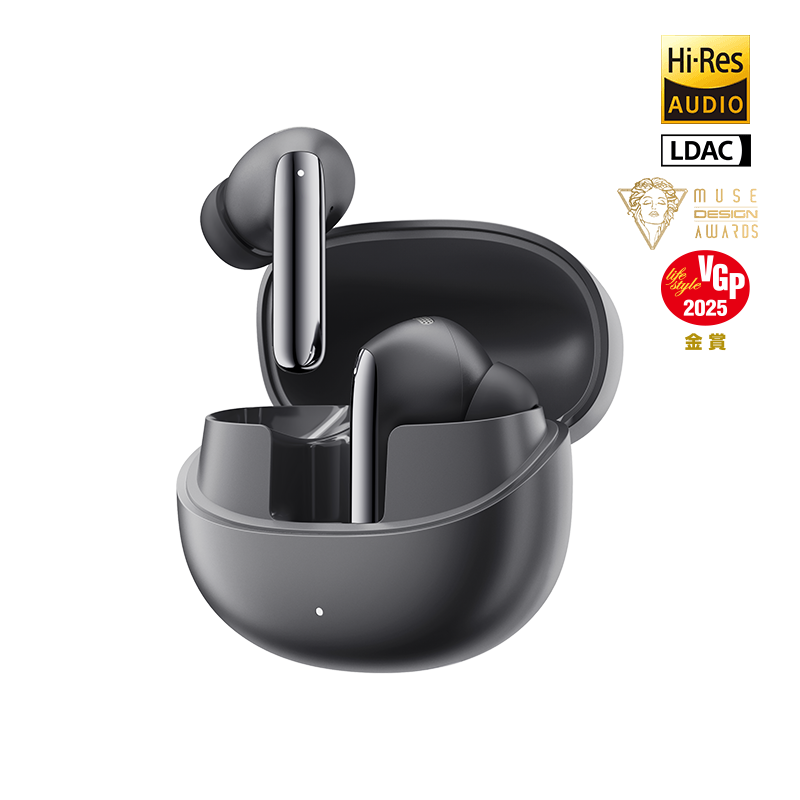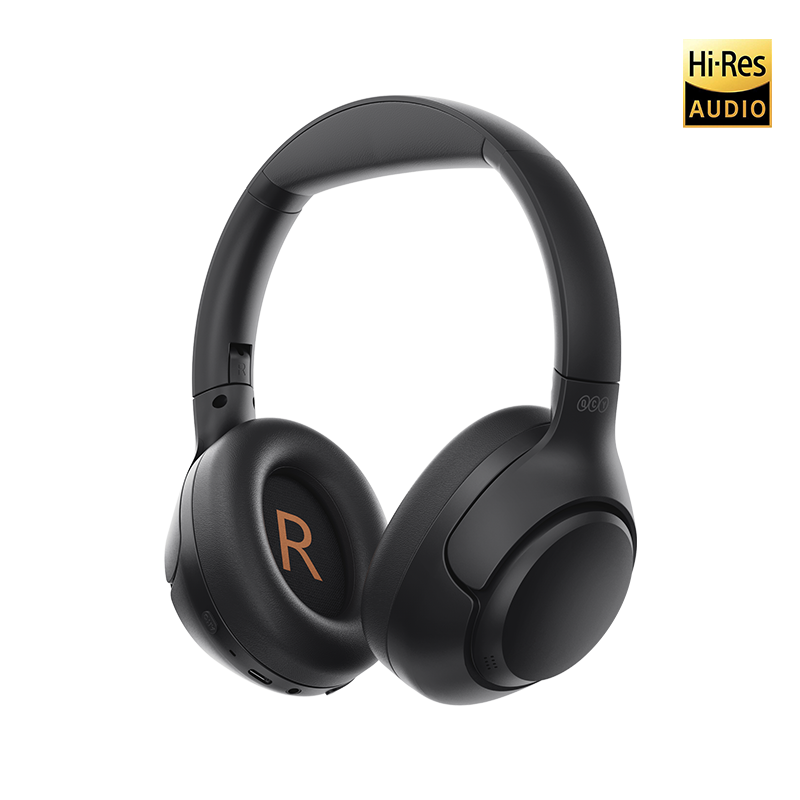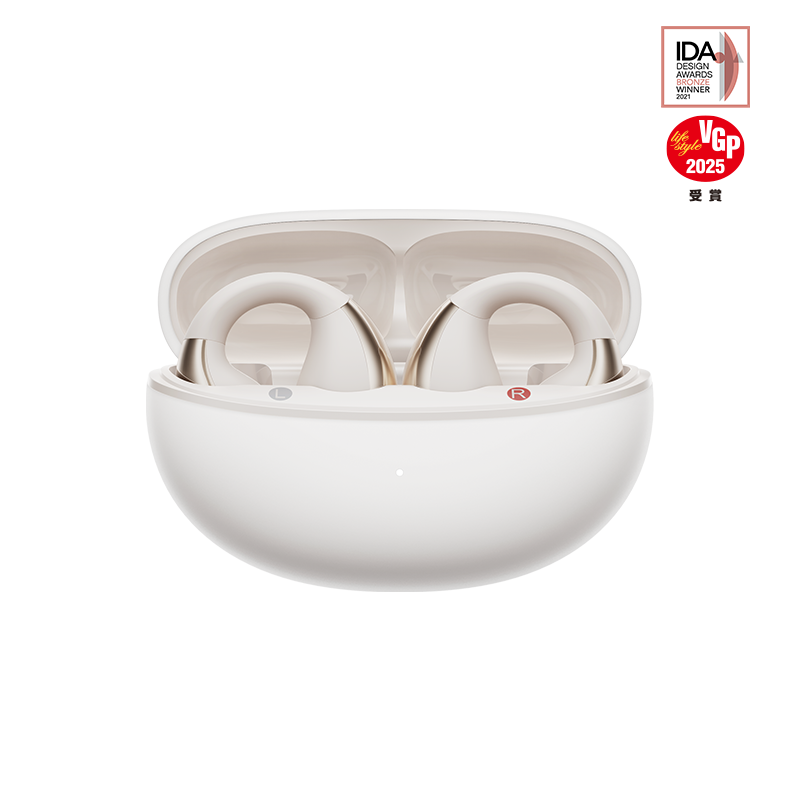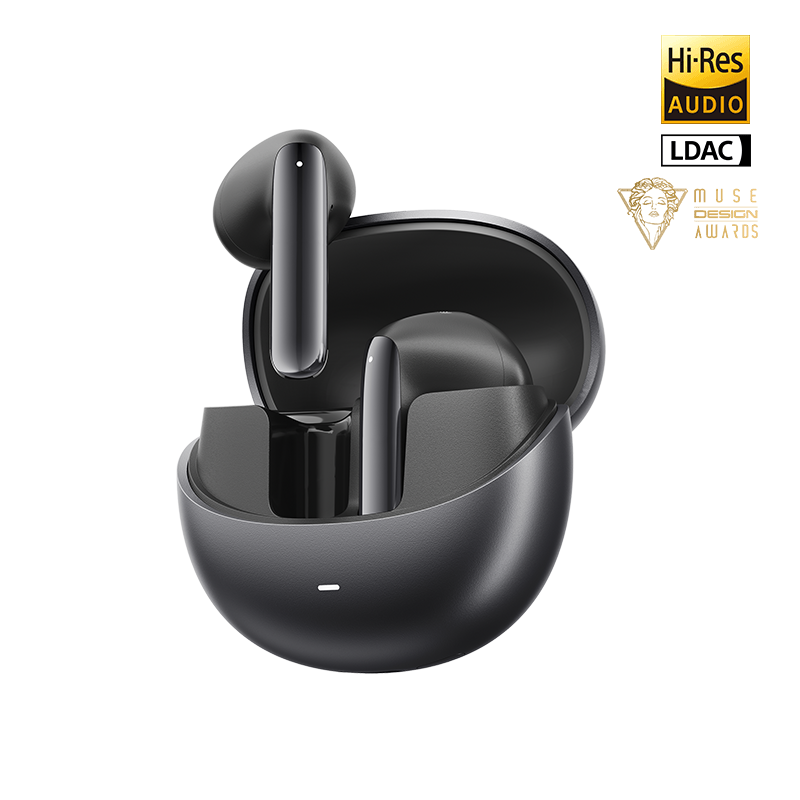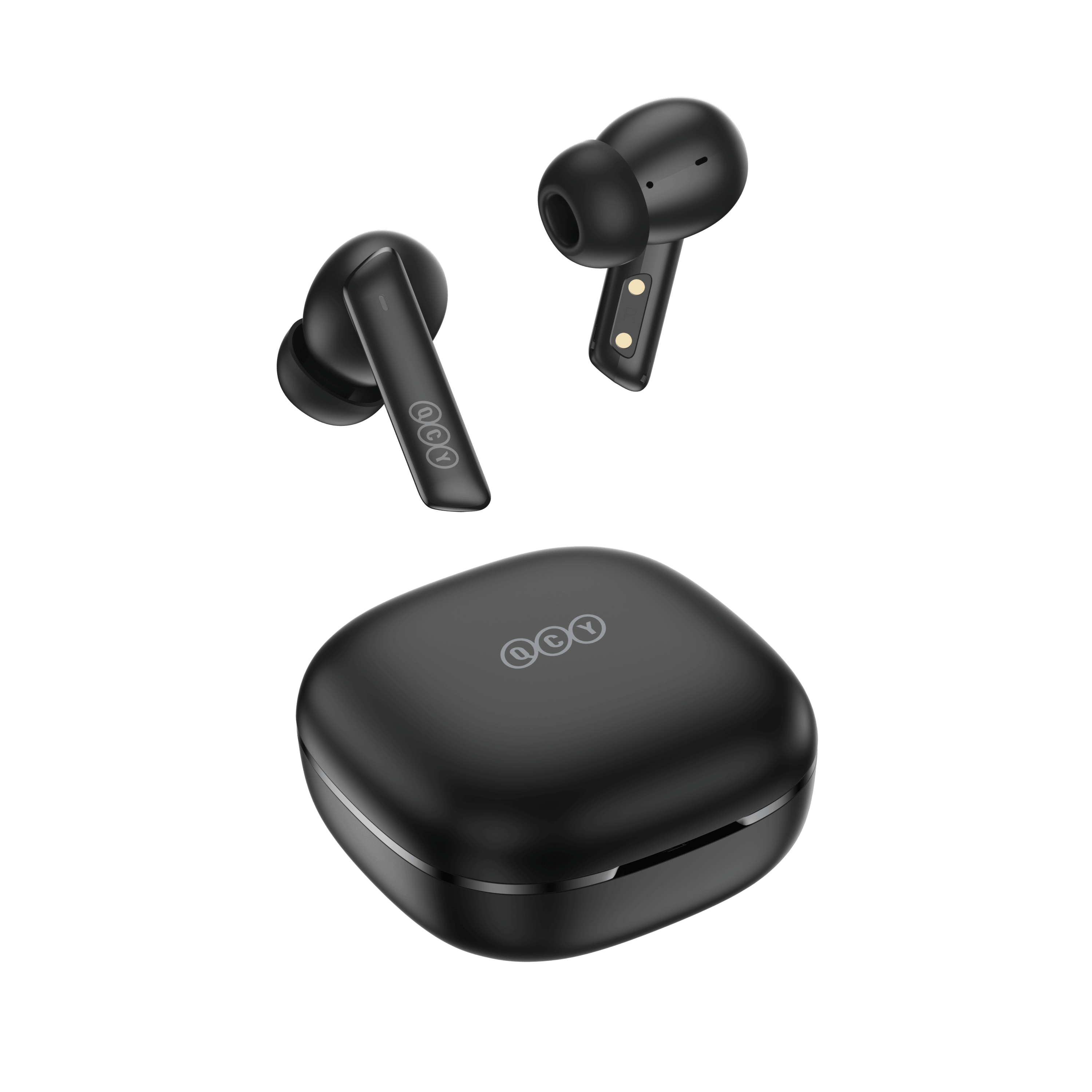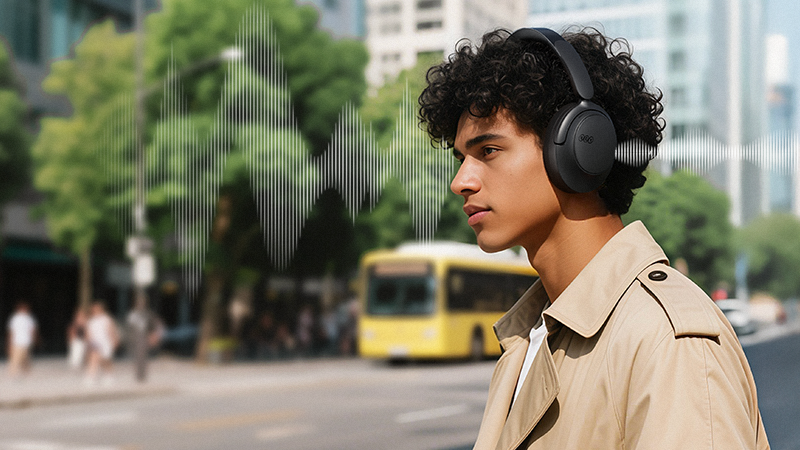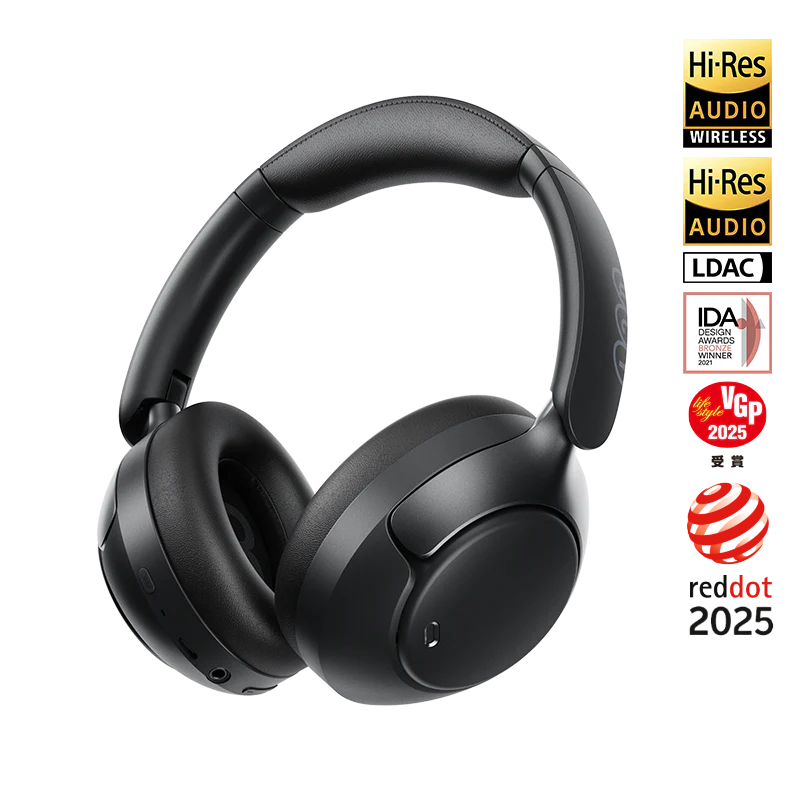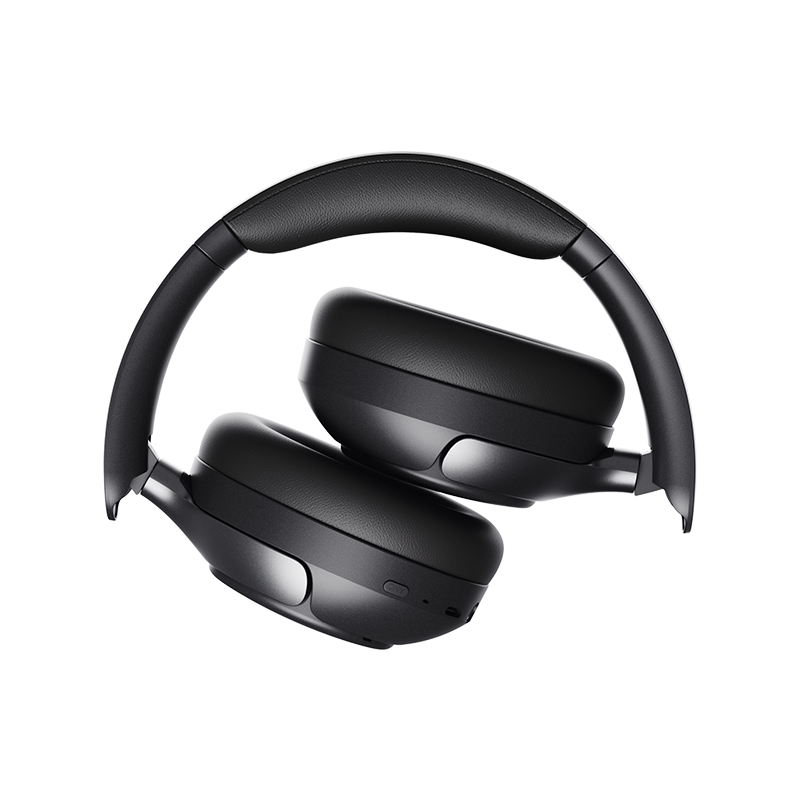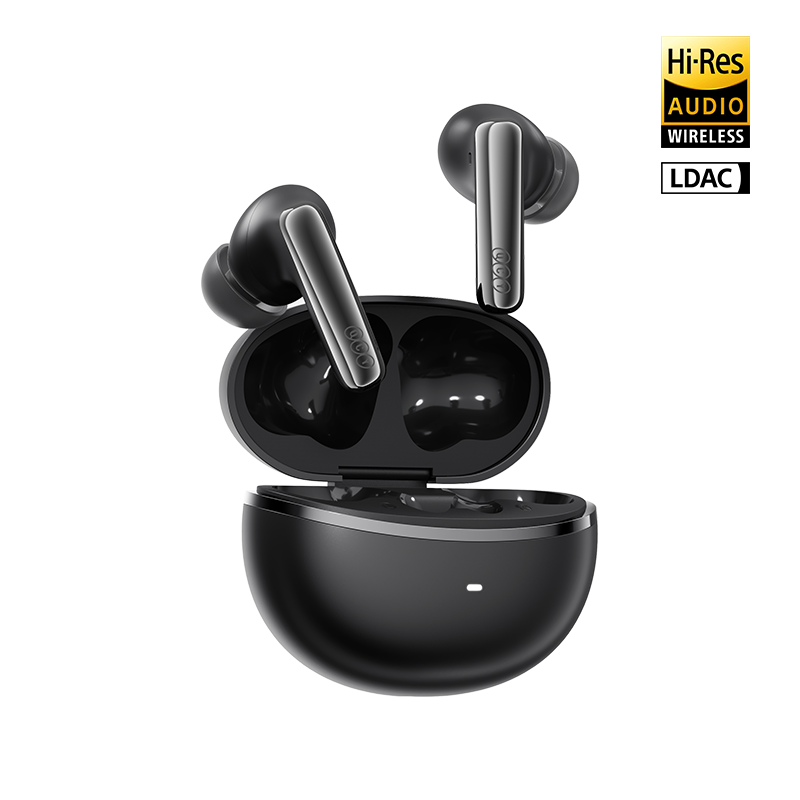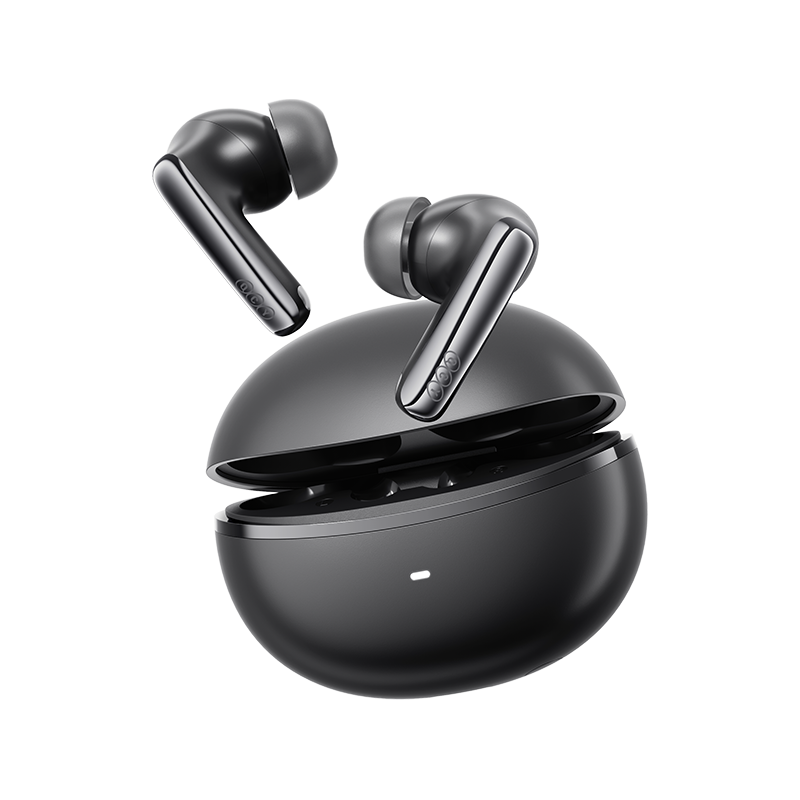
In the cacophony of 2025, where urban hums, office chatter, and digital pings vie for your attention, headphones have become more than music players—they're tools for controlling your soundscape. Searches for "ANC vs transparency" and "noise cancelling headphones" have surged 38% year-over-year (Google Trends), reflecting a growing need to either block the world or selectively let it in. Whether you're a student drowning out dorm noise, a commuter navigating crowded subways, or a remote worker juggling calls, the choice between active noise cancellation (ANC) and transparency mode defines your audio experience.
QCY's lineup, like the H3 Pro and MeloBuds N70, blends both features into budget-friendly packages, offering 40-56dB noise reduction and adjustable ambient pass-through for under $80. This guide breaks down what ANC and transparency mode do, weighs their pros and cons, compares real-world performance, and spotlights QCY's dual-feature champions. No matter your lifestyle, we'll help you decide which mode—or mix—keeps your ears happy and your focus sharp.
What Is Noise Cancelling?
Active noise cancellation (ANC) is tech wizardry that silences the world around you. It uses built-in microphones to detect external sounds—like airplane engines or café chatter—and generates inverse sound waves (anti-phase) to cancel them out. The result? A sonic bubble that reduces ambient noise by 25-56dB, particularly low frequencies (50-500Hz, like traffic hums). A 2025 SoundGuys report notes ANC cuts perceived noise by up to 90% in loud environments, boosting focus by 20% (Journal of Cognitive Psychology, 2024).
ANC comes in flavors:
-
Feedforward (external mics only) catches noise before it hits your ears, best for consistent drones.
-
Feedback (internal mics) fine-tunes for ear fit, reducing higher frequencies like voices.
-
Hybrid (both) blends precision, as in QCY H3 Pro’s 40dB reduction.
-
Adaptive (MeloBuds N70’s 56dB) auto-adjusts to your surroundings, easing ear pressure.
Modern ANC earbuds and headphones, paired with Bluetooth 5.3 or 6.0, maintain low latency (~80ms) for calls and media. Apps like QCY’s let you toggle levels—mild for offices, strong for flights. Downside? Battery drain (15-20% faster) and potential "hiss" in quiet settings for budget models. ANC is your fortress for deep focus or escaping noisy chaos.
What Is Transparency Mode?
Transparency mode flips the script, piping external sounds into your headphones so you stay connected to your environment without removing them. Microphones capture ambient audio—conversations, traffic, or announcements—and blend it with your music or calls. Unlike passive openness (e.g., open-ear buds), transparency actively controls what you hear, often with adjustable levels. QCY’s MeloBuds N70, for instance, offers three transparency settings, amplifying voices while muting background din.
The tech leans on AI-driven mic arrays (4-6 mics) to prioritize human speech or key sounds, making it ideal for dynamic settings like classrooms or busy streets. A 2024 TechRadar survey found 65% of users prefer transparency for situational awareness, cutting the need to pause audio by 40%. It’s less battery-intensive than ANC, sipping 5-10% less power, and avoids ear pressure entirely. Catch? In very loud environments, transparency can muddy audio clarity, and budget models may struggle with voice isolation.
Benefits and Limitations of Each
Both ANC and transparency mode cater to distinct needs, but neither’s perfect. Let’s weigh them.
Active Noise Cancelling
Benefits:
-
Deep Focus: Reduces low-frequency noise (e.g., plane engines) by 25-56dB, per QCY H3 Pro tests, ideal for studying or working in noisy cafés.
-
Immersive Audio: Enhances music depth by muting distractions; 50mm drivers in H3 Pro amplify bass without bleed.
-
Sleep Aid: Blocks travel noise (trains, hotels), cutting perceived travel time by 30% via reduced stress (2025 Travel Medicine study).
-
Customizable: Adaptive modes (MeloBuds N70) auto-tune for context—offices, flights, or gyms.
Limitations:
-
Battery Drain: ANC mode shortens playtime (e.g., H3 Pro drops from 55h to 30h).
-
Cost/Complexity: Premium ANC adds $10-20 to price; budget models may hiss in silence.
-
Ear Pressure: Prolonged use can cause discomfort in 10% of users, per ergonomics data.
-
Limited Highs: Struggles with sharp noises (e.g., keyboard clacks) unless hybrid/adaptive.
Transparency Mode
Benefits:
-
Situational Awareness: Hears critical sounds (traffic, colleagues) without pausing; 68% of students value this for group study (2024 SoundGuys).
-
Comfort: No ear pressure; ideal for all-day wear, especially in earbuds like MeloBuds N70 (4.8g).
-
Battery Efficiency: Saves 5-10% power vs. ANC, extending H3 Pro’s life to 55h.
-
Social Flexibility: Adjustable levels (e.g., N70’s three modes) balance music and voices for calls or classes.
Limitations:
-
Noise Overload: In loud settings (e.g., concerts), ambient bleed can muddy audio, per 15% of user reviews.
-
Mic Dependence: Weak mics in budget models distort voices; QCY’s 6-mic arrays avoid this.
-
Less Immersion: Can’t match ANC’s isolation for pure music or focus tasks.
-
Learning Curve: Adjusting levels via apps (QCY’s) takes practice for seamless use.
ANC is king for shutting out the world; transparency thrives when you need to stay connected. Most modern headphones, like QCY’s, offer both, letting you switch on the fly.
Real-World Scenarios Comparison
Let’s pit ANC against transparency in three daily scenarios, using QCY’s H3 Pro and MeloBuds N70 as benchmarks.
Studying in a Noisy Environment (Café, Dorm)
ANC Wins: A bustling café or dorm with chatter and clinking dishes demands isolation. H3 Pro’s 40dB hybrid ANC mutes low hums (espresso machines) and mids (voices), creating a focus bubble for essays or coding. 50mm drivers ensure crisp podcast vocals; 30h ANC battery lasts all-nighters. A 2024 MIT study found ANC boosts study efficiency by 22% in noisy settings.
Transparency Struggles: MeloBuds N70’s transparency mode lets in too much chatter, diluting music clarity. Useful for quick roommate chats, but toggling back to ANC is frequent. Verdict: ANC for deep study; transparency for brief check-ins.
Commuting (Subway, Bus)
Transparency Takes Lead: Urban commutes need awareness—missing a stop or ignoring a honk is risky. MeloBuds N70’s three-level transparency pipes in announcements and traffic while keeping playlists audible. 6-mic AI isolates voices (e.g., ticket agents); 7h ANC-on battery covers long transits. Lightweight 4.8g buds avoid fatigue.
ANC Falls Short: H3 Pro’s ANC blocks subway rumble (98% reduction), but you’ll miss key sounds unless toggling transparency. Heavier 268g frame suits seated rides, not packed trains. Verdict: Transparency for safety; ANC for calm long rides.
Office Work (Hybrid/Remote)
Both Shine: Hybrid offices blend focus and collaboration. H3 Pro’s ANC silences open-plan noise (printers, chatter) for deep work; boom mic ensures clear Zoom calls. Switch to transparency for team huddles without removing headphones. MeloBuds N70’s adaptive 56dB ANC tackles louder offices, while transparency’s voice boost aids quick chats. 35h total battery (ANC on) supports full days.
Edge Cases: ANC for solo coding; transparency for meetings. Drawback: Frequent mode-switching needs app finesse. Verdict: Hybrid use—lean ANC for focus, transparency for interaction.
QCY Products with Both Features
QCY’s 2025 lineup integrates ANC and transparency seamlessly, offering budget-friendly versatility. We’ve tested two standouts from qcy.com, prioritizing travel, work, and study scenarios.
|
Model |
Price |
ANC Depth |
Battery (ANC On/Total) |
Weight |
Transparency |
Best For |
|---|---|---|---|---|---|---|
|
$65.99 |
40dB Hybrid |
40h/55h |
268g |
Yes, Adjustable |
Long-haul focus |
|
|
$59.99 |
56dB Adaptive |
7h/35h |
4.8g/bud |
Yes, 3 Levels |
Dynamic multitasking |
QCY H3 Pro: The Over-Ear Titan
At $65.99 (2025 Red Dot winner), the H3 Pro is a travel and office beast. Its 40dB hybrid ANC blocks plane engines and office buzz, with 50mm titanium drivers delivering hi-res LDAC audio—punchy bass for music, clear mids for calls. Transparency mode adjusts via QCY app, amplifying voices for crew or colleague chats. 55h total battery (30h ANC on) with 10min=4h fast charge suits marathons; foldable 268g frame with plush cushions aces comfort. 4.8/5 stars: “Flight savior” (Amazon). Drawback: Bulkier for small bags. Ideal for immersive tasks—flights, deep work.
QCY MeloBuds N70: The Agile Earbud
For $59.99, the N70’s 56dB adaptive ANC—class-leading—mutes voices and keyboards across 5kHz, perfect for noisy campuses. Dual drivers (dynamic + MEMS tweeter) with LDAC offer distortion-free audio for lectures or lo-fi. Three-level transparency boosts voices in meetings; 6-mic AI ensures call clarity. 7h/35h battery (ANC on), 4.8g buds with five tip sizes (XS-XL), and IPX5 waterproofing fit dynamic days. 4.7/5 stars: “ANC punches above price” (user review). Con: Battery dips at max ANC. Best for multitasking students/commuters.
QCY Edge: Both pair with QCY’s app for EQ, ANC/transparency tweaks, and firmware updates. Shop at qcy.com/collections/anc-earbuds; use “FOCUS2025” for 10% off.
Final Thoughts
ANC vs. transparency mode isn’t a binary choice—it’s about your day. ANC, like QCY H3 Pro’s 40dB shield, locks you into focus for flights or study sprints, while transparency, as in MeloBuds N70’s voice-boosting modes, keeps you connected on commutes or in meetings. With both in one device, you’re covered for 2025’s hybrid life. Prioritize ANC depth for noisy escapes, transparency for social settings, and battery/comfort for endurance.











